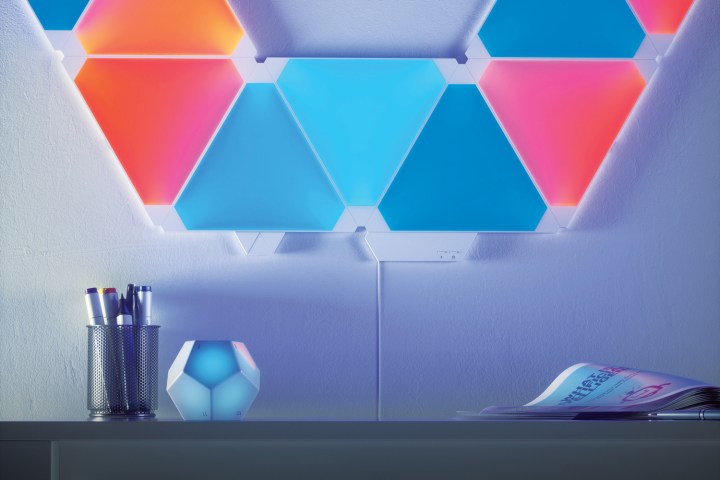
Nanoleaf has forged a name for itself as one of the go-to sources for decorative smart lights. Razer has made a name for itself as one of the go-to companies for high-quality gaming gear. Now the two have teamed up to provide gamers (and smart lighting enthusiasts) with a new type of integration called Nanoleaf x Razer Chroma RGB that brings customized lighting away from just your keyboard and PC and onto your wall.
The service allows gamers to control the Nanoleaf Canvas to sync up with your PC setup. The colors of your Nanoleaf will match those of your PC, but the integration isn’t a one-way street. It also provides control of the PC via the smart lights. The touch controls that Nanoleaf provides mean gamers can potentially launch their favorite games or even turn on the PC by pressing on the corresponding light tile.
Nanoleaf x Razer Chroma RGB is about more than just looking good, though. The lighting can be programmed to react to in-game events. Scoring a point, readying an ultimate ability, or reaching a set point in the game can cause the lights to flash and change their color, serving as an impossible-to-miss signal for gamers.
No one needs any special equipment or additional purchases to use the Nanoleaf x Razer Chroma RGB. Users will need the Nanoleaf Canvas lights — a $229 purchase — and Razer gaming peripherals like a keyboard, mouse, or mouse pad. The Razer Synapse website provides the necessary software to its users. After that, setup is as easy as following the steps.
Nanoleaf panels can be arranged on the walls in a variety of different patterns. Gamers could choose to create a Minecraft-style sword on the wall or a creature from Space Invaders. Aside from creating a unique look for a game room, the lights will help reduce eye strain if playing in a dark room.
The partnership is an interesting one, but not wholly out of the ordinary given Razer’s recent moves. Last month, the gaming peripheral company teamed up with an electric vehicle company to bring RGB lighting to the vehicles. Razer continues to improve its RGB line of products, and despite all the jokes in the gaming community about framerate improvements, the audience has proven the demand is there.



